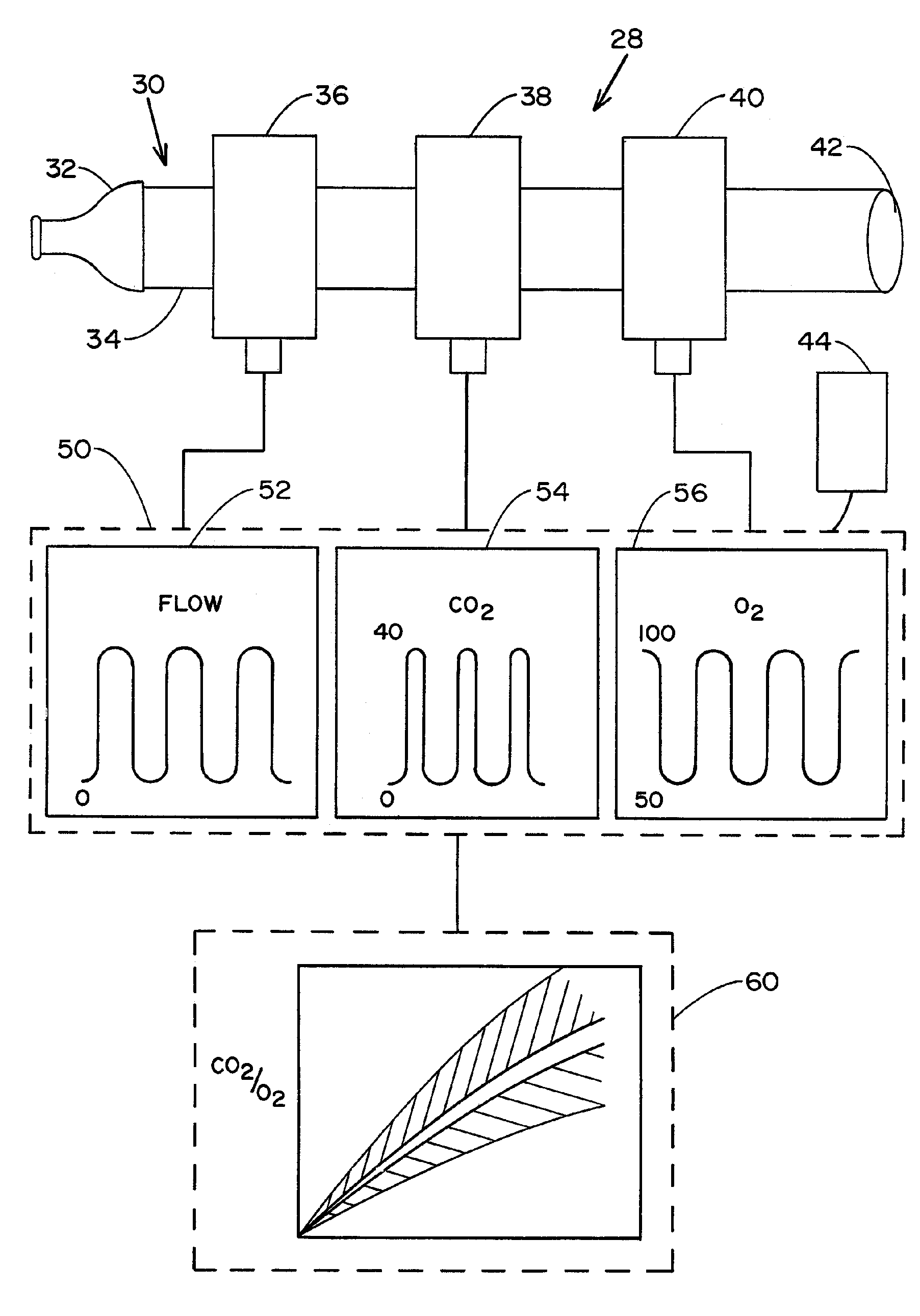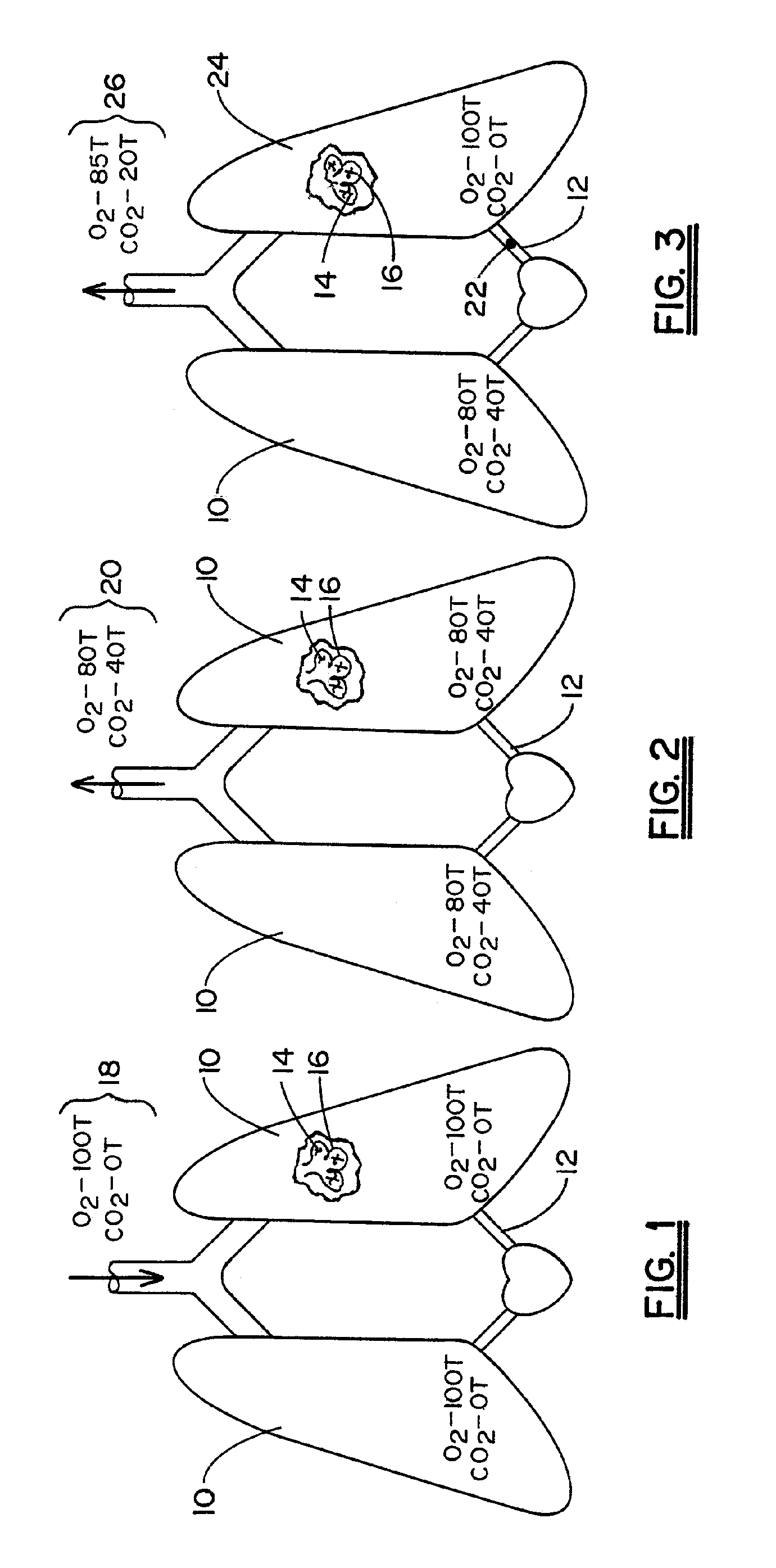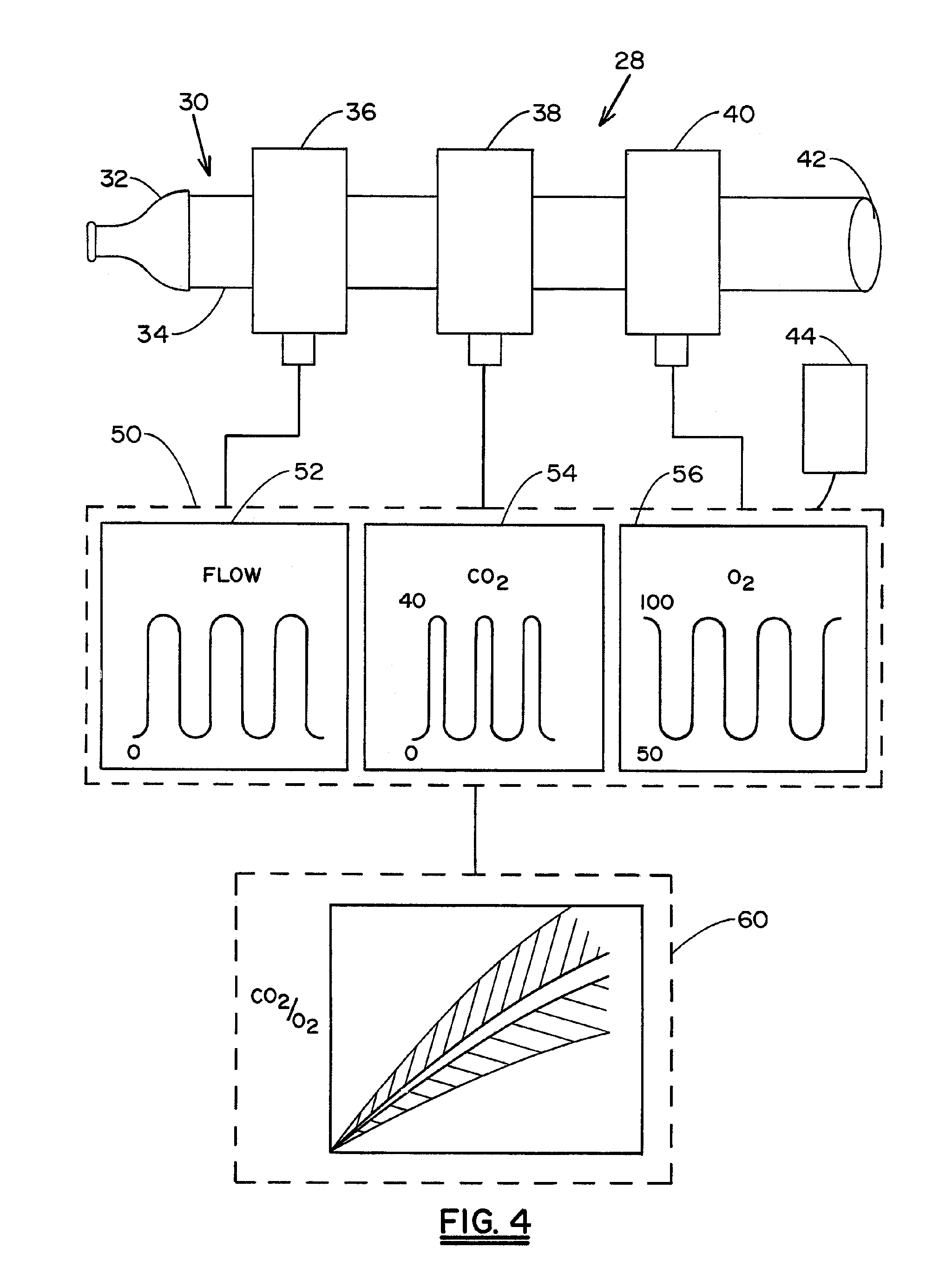Non-invasive device and method for the diagnosis of pulmonary vascular occlusions
a pulmonary embolism and non-invasive technology, applied in the field of vascular occlusions, can solve the problems of inability to reliably include or exclude the diagnosis of pulmonary embolism in arterial blood analysis, the inability to accurately diagnose pulmonary embolism, and the inability to detect pulmonary embolism in extreme cases. , to achieve the effect of accurate diagnosis of pulmonary vascular occlusions and non-invasive diagnosis of pulmonary embolism
- Summary
- Abstract
- Description
- Claims
- Application Information
AI Technical Summary
Benefits of technology
Problems solved by technology
Method used
Image
Examples
Embodiment Construction
[0024]Referring now to the drawing in which like reference numerals refer to like parts throughout, there is seen in FIG. 1 a representation of lungs 10 free from any pulmonary occlusions. In healthy lungs 10, blood flows freely from the pulmonary arteries 12 into the capillaries 14 surrounding the individual alveoli 16 of the lungs 10. When inhaled air 18 is drawn into the lungs 10 and alveoli 16, oxygen is transferred from the inhaled air 18 to the blood stream and carbon dioxide is transferred out. Inhaled air 18 typically contains an oxygen partial pressure of approximately one hundred (100) torr and a carbon dioxide partial pressure of zero (0) torr.
[0025]Once the inhaled air 18 reaches the alveoli 16, the oxygen content decreases while the carbon dioxide content increases until an equilibrium with blood gas levels in the pulmonary arteries 12 is reached. The inhaled air 18 is then, as seen in FIG. 2, expired as exhaled air 20. Exhaled air 20 from properly functioning lungs typ...
PUM
| Property | Measurement | Unit |
|---|---|---|
| partial pressure | aaaaa | aaaaa |
| partial pressure | aaaaa | aaaaa |
| partial pressure | aaaaa | aaaaa |
Abstract
Description
Claims
Application Information
 Login to View More
Login to View More - R&D
- Intellectual Property
- Life Sciences
- Materials
- Tech Scout
- Unparalleled Data Quality
- Higher Quality Content
- 60% Fewer Hallucinations
Browse by: Latest US Patents, China's latest patents, Technical Efficacy Thesaurus, Application Domain, Technology Topic, Popular Technical Reports.
© 2025 PatSnap. All rights reserved.Legal|Privacy policy|Modern Slavery Act Transparency Statement|Sitemap|About US| Contact US: help@patsnap.com



